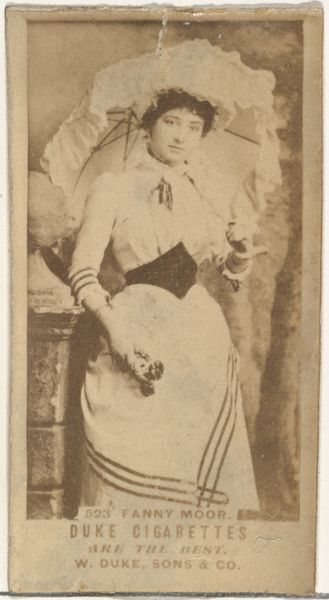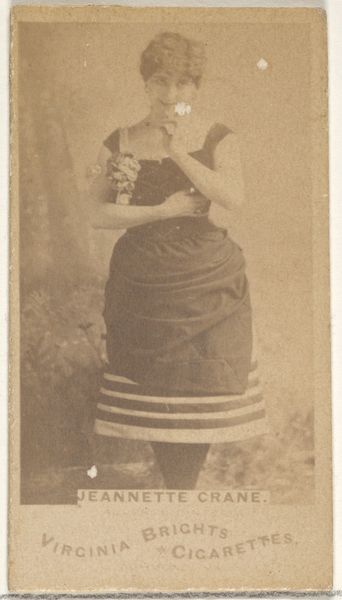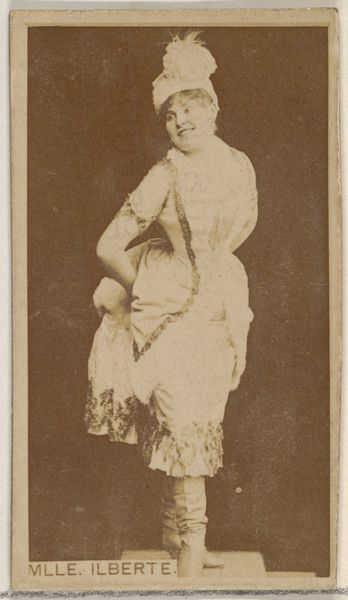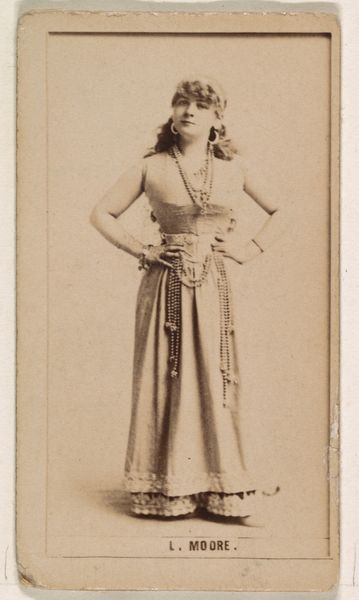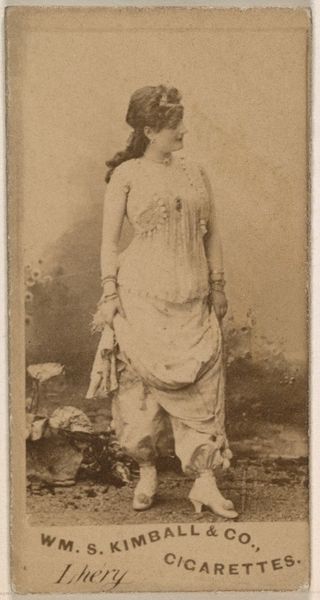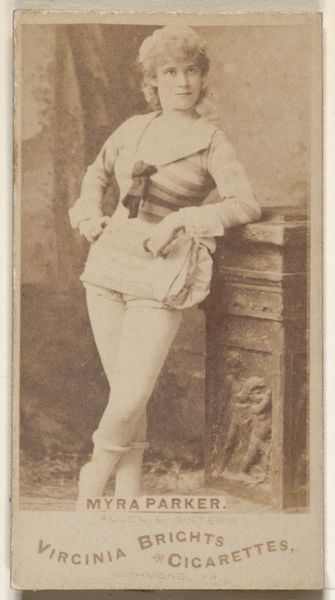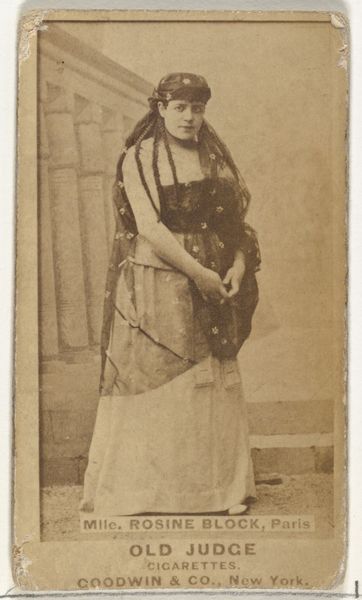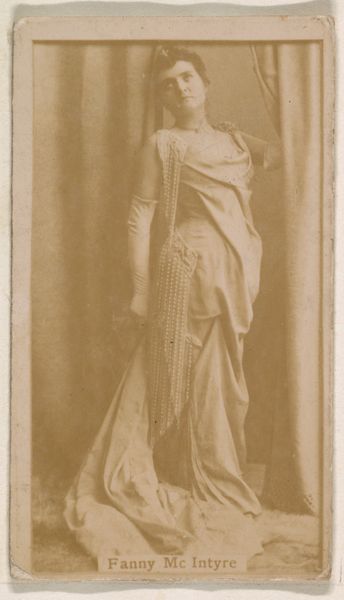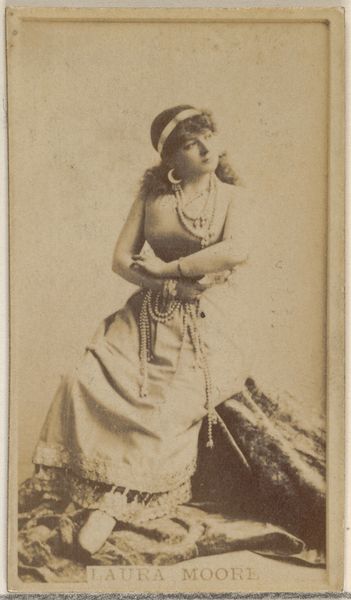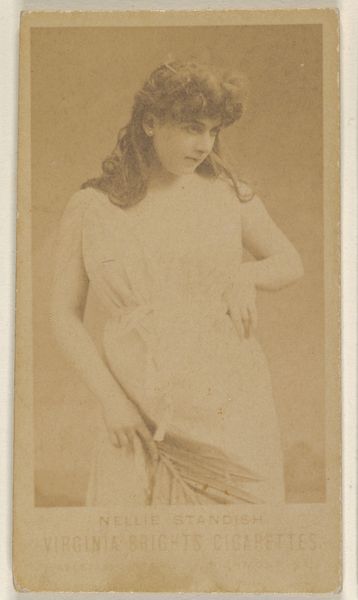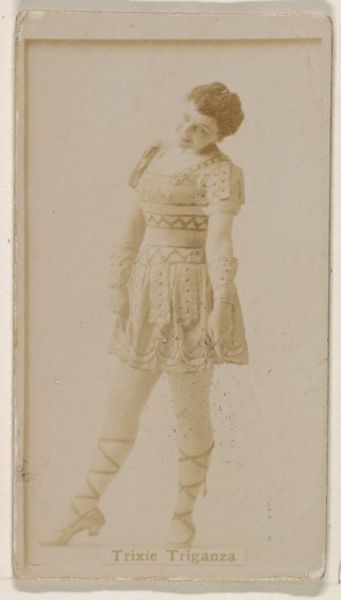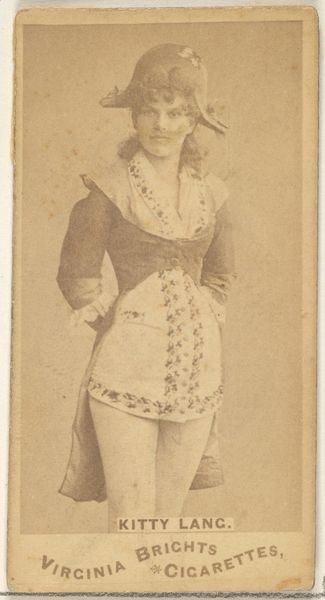![[Actress holding wooden cane], from the Actors and Actresses series (N145-8) issued by Duke Sons & Co. to promote Duke Cigarettes by W. Duke, Sons & Co.](/_next/image?url=https%3A%2F%2Fd2w8kbdekdi1gv.cloudfront.net%2FeyJidWNrZXQiOiAiYXJ0ZXJhLWltYWdlcy1idWNrZXQiLCAia2V5IjogImFydHdvcmtzLzA4MjEyNmI5LWUwM2MtNDllMS04NTU5LWY5MDZjMDQ3YjU4Mi8wODIxMjZiOS1lMDNjLTQ5ZTEtODU1OS1mOTA2YzA0N2I1ODJfZnVsbC5qcGciLCAiZWRpdHMiOiB7InJlc2l6ZSI6IHsid2lkdGgiOiAxOTIwLCAiaGVpZ2h0IjogMTkyMCwgImZpdCI6ICJpbnNpZGUifX19&w=3840&q=75)
[Actress holding wooden cane], from the Actors and Actresses series (N145-8) issued by Duke Sons & Co. to promote Duke Cigarettes 1890 - 1895
0:00
0:00
drawing, print, photography, albumen-print
#
portrait
#
drawing
# print
#
photography
#
albumen-print
Dimensions: Sheet: 2 11/16 × 1 3/8 in. (6.8 × 3.5 cm)
Copyright: Public Domain
Editor: Here we have "[Actress holding wooden cane], from the Actors and Actresses series (N145-8) issued by Duke Sons & Co. to promote Duke Cigarettes," an albumen print photograph from between 1890 and 1895. It seems to have been produced as part of a series of promotional cards. What strikes me immediately is the contrast between the formal portrait style and its origin as cigarette advertisement. How do you read this work? Curator: Focusing on its compositional elements, note the subtle but persistent use of triangular shapes. The most obvious is the placement of the actress herself, subtly echoed in the framing of her bust by her garments and again, faintly, in the fall of light. And observe how the gaze directs our own, creating a closed visual system that demands the viewer engage with its artifice. How does this directed gaze affect your understanding? Editor: Well, the composition does lead the eye directly to the actress, her face. It’s a portrait, so it makes sense. I hadn’t noticed the triangle shapes before. Curator: Precisely! And what do you make of the monochrome palette and its contribution to the overall structure? The tones create volume that is in tension with the otherwise flat presentation. Editor: The single color gives it a vintage feeling, I guess. Also, because it is a card it feels very small and distant somehow, although the woman herself seems alive. I see now how the shape gives it presence! I learned to observe composition, not just content. Curator: A valuable lesson indeed. And consider how an understanding of form enables interpretations of content and historical context, leading to deeper engagements.
Comments
No comments
Be the first to comment and join the conversation on the ultimate creative platform.
